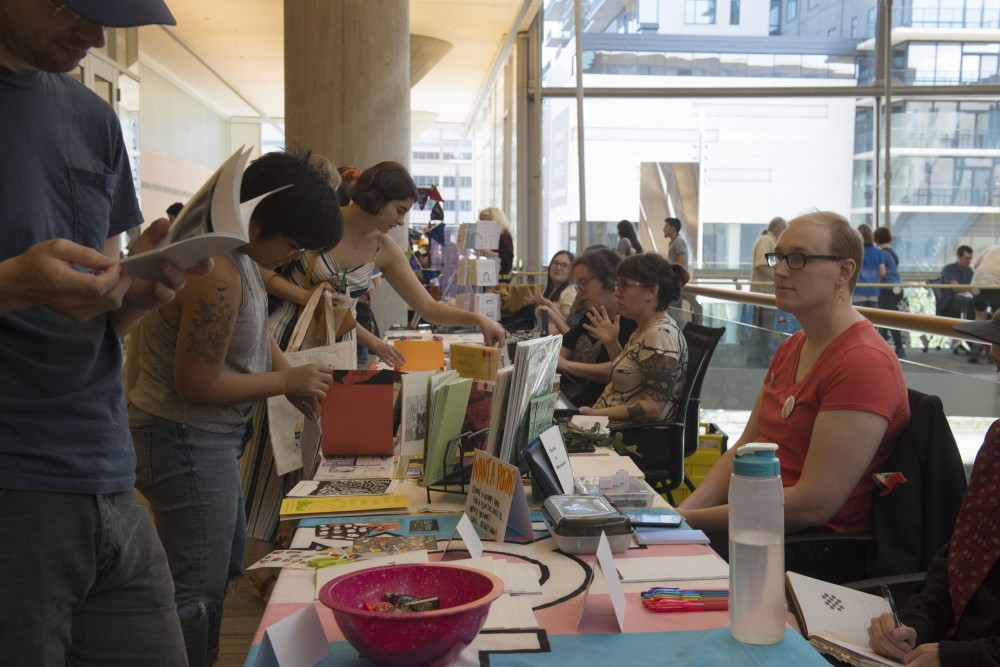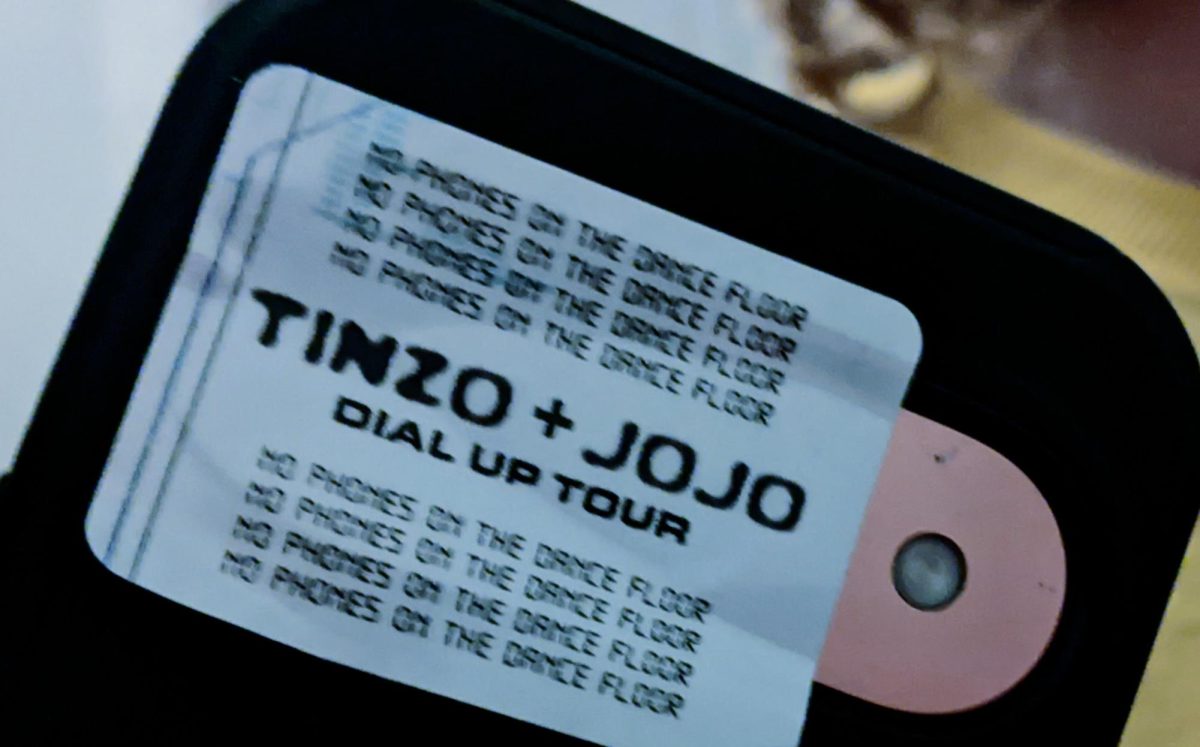Walking into the Minneapolis Central Library, you hear an unfamiliar buzz of conversation echoing off the walls of the otherwise quiet place. You go up the escalator and are immediately greeted with tables of original art, an infinite number of stickers and proud, smiling faces. This is the Twin Cities Zine Fest.
The yearly event focuses on zines: hand-made publications that are not mass produced. A zine can take form in a variety of shapes and sizes, and each communicates a different theme.
“[A zine is] mostly homemade and it’s got an attitude that it carries with it,” said University of Minnesota associate writing studies professor Tom Reynolds. “It challenges authority usually and, in general, the form that it takes is expressive as well as the content that it’s trying to get across.”

Zines have become almost a symbol of defiance — a physical representation of controlled chaos and a call to action.
“There’s this emphasis on making, creating something that is not slick like magazines in the publishing world, but rather small but powerful,” Reynolds said.
The medium is budding on the University campus. Sophomores Jonas Keeler and Brianna Mathias, along with a group of friends, have taken their love of creativity to publish their own zine, “The Bazaar.”
“We originally came up with the idea to start our own publication that would be completely focused on creativity and doing whatever you would like to put into a publication, accepting all forms of art, all forms of media — anything really,” Keeler said.
“The Bazaar” has no boundaries and no rules. Creators are able to publish their work in any form it takes.
“I like the idea of there being no rules, which is kind of what our zine is,” Mathias said. “It’s all freeform, we just put whatever in and it’s crazy, it’s random, it’s anarchist, it’s punk, it’s very fun and it’s very inclusive.”
The zine operates in the same way that the first zines did — as outlets for emotion and personal anecdotes coupled with recognition of social issues.
“Communities would be created by sharing ideas, stories and emotions through these stream-of-consciousness collections,” said sophomore Hannah Dove, another member of “The Bazaar.” “Zines house feelings that wouldn’t normally be revealed on the big glamorous pages of popular magazines.”
There’s an authenticity to zines that is seemingly absent from glossy, mass-produced pages.
“It’s just crazy to think that there’s so many people who are making art and loving it and enjoying it and not really expecting to get anything from it,” Keeler said. “I love that aspect.”
The Zine Fest, which took place on Saturday, is an inclusive space that celebrates the many identities of the Twin Cities. Local artists shared their passions and talents through a hands-on medium while simultaneously raising awareness for various social issues.
“I think zines are very different from magazines in that they’re created by people who don’t often see representation themselves. So we can make our own representation,” said Chase Underwood, a junior who began making his own zines after attending a workshop three years ago. “I think that it’s a lot more accessible.”
Free booklets and stickers are abundant at the Zine Fest, reflecting the accessibility and inclusivity that is central to this community of creators.
There is no expectation of large profits, just a genuine desire to create a kinder world.
“I love that zines are intersectional and inclusive,” Mathias said. “They started out being very queer, very gay … underground zine culture has really been inspiring to me. I think that it’s super neat that we’re able to include everyone. Everyone feels included in zines.”








